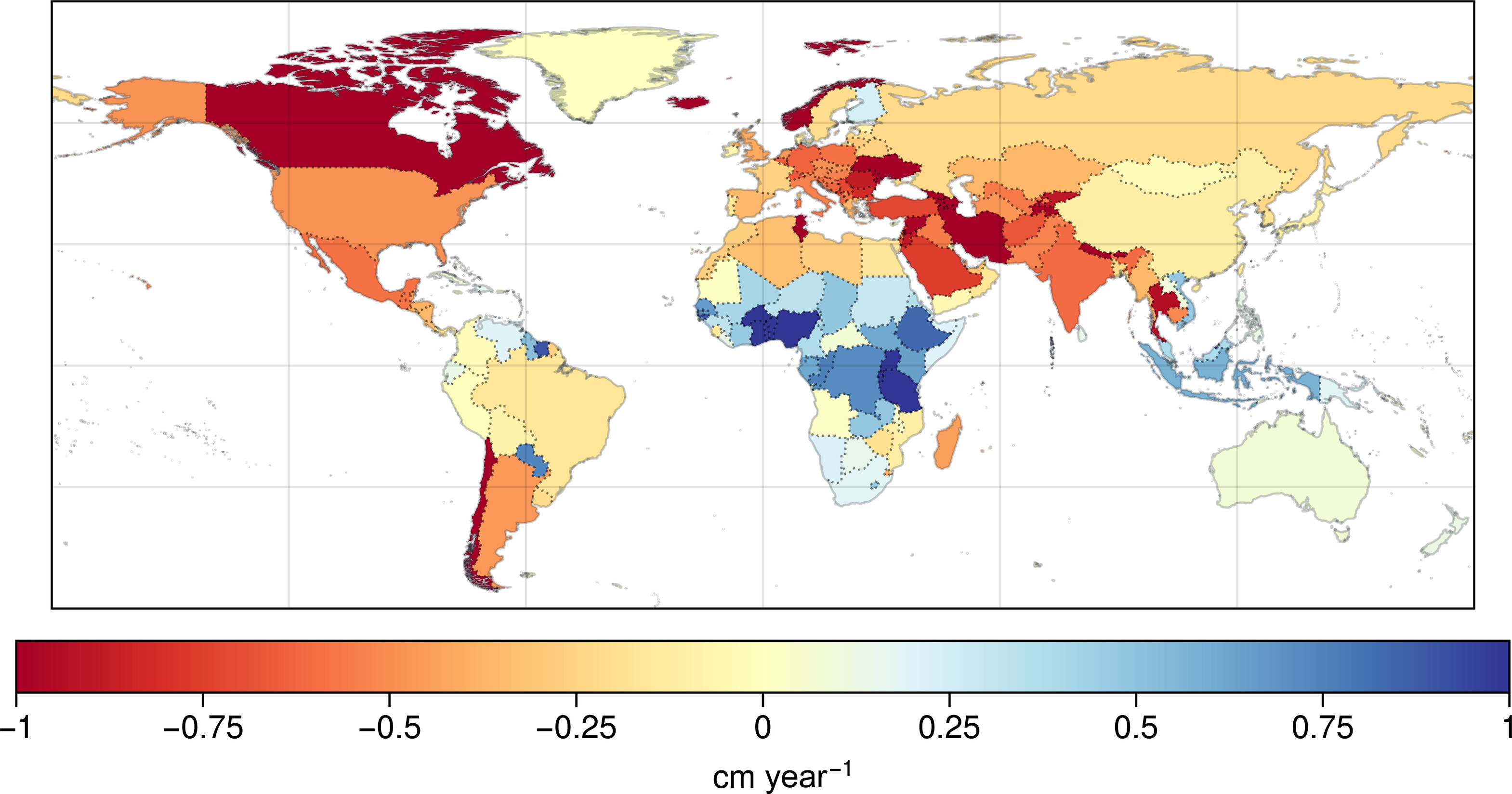Continents have lost so much water since 2002 that they have surpassed ice sheets as the biggest contributor to global sea level rise, a new study reveals.
Almost 70% of this loss is due to unchecked groundwater extraction, which removes water from deep aquifers and eventually transfers it to the ocean, researchers found. Together with rising rates of evaporation due to climate change, this has caused rapidly drying “hotspots” to merge into four “mega-drying” regions, the scientists said.
“There’s very few places now that are not drying,” study co-author Jay Famiglietti, a professor in the School of Sustainability at Arizona State University, told Live Science. “I’ve been watching it for 20 years, and it’s just gotten worse, and worse, and worse.”
To measure continental drying, the researchers used data from satellites that respond to small mass changes on Earth. Gravitational pull drags the satellites down when an area gains water weight and releases them back to their initial orbit when water is lost. The resolution on the ground is about 15 miles (25 kilometers), which is enough to detect small changes on regional scales, Famiglietti said.
Drying hotspots are typically regions with big aquifers that humans have heavily exploited for decades, meaning they have high rates of water loss, Famiglietti said. These hotspots include places like the North China Plain, northwest India and California’s Central Valley, which have lost enormous amounts of water through human activities and evaporation. This water either enters rivers, which end up in the ocean, or rains out of the atmosphere over the ocean — ultimately making sea levels rise.
The new findings, published July 25 in the journal Science Advances, show that drying hotspots are rapidly expanding, and many of these areas are joining up. “South Asia is a great example,” Famiglietti said. “Around the Himalayas, there used to be four or five hotspots. Now it’s just all the way across.”
Related: ‘An existential threat affecting billions’: Three-quarters of Earth’s land became permanently drier in last 3 decades
The study’s authors called these continent-size areas mega-drying regions. They identified three other such regions worldwide, all of which are in the Northern Hemisphere: one combining Alaska, northern Canada and northern Russia, another spanning Western Europe, and a third straddling southwestern North America and Central America. Drying regions are growing so fast, “it’s kind of like a creeping mold or virus that’s spreading across the landscape,” Famiglietti said.
It’s unclear why the Southern Hemisphere has no mega-drying regions, but the researchers think it’s somehow linked to a record-breaking El Niño event more than 10 years ago. “There is this sort of shift in the rate of drying and the expansion of the extremes that happened around 2014,” Famiglietti said.
Drying hotspots seemed to flip from being mostly in the Southern Hemisphere to mostly in the Northern Hemisphere during a global transition from a very strong La Niña to the strongest El Niño on record between 2011 and 2014, Famiglietti said, adding that his team is still trying to understand why.
“Most important natural resource”
Drying in Alaska, Canada and Russia is driven mainly by permafrost thaw and ice melt, while drying in Western Europe is caused by drought, Famiglietti said. The U.S. Southwest was dry before humans started pumping groundwater, but this has now spread to Mexico and Central America.
Worldwide, only the tropics are getting wetter, which is also driven by global warming. Breaking down the trend, the researchers found that 101 countries — home to 75% of the world’s population — have been losing fresh water over the past 22 years.

“Groundwater is becoming the most important natural resource in these drying parts of the world,” Famiglietti said.
The implications are profound, because continental drying affects food production, biodiversity, natural catastrophes, sea levels and ways of living. As we continue to cook the planet, more groundwater will be needed to irrigate crops and sustain populations, forcing people to drill ever deeper into aquifers, at great expense.
“The implications are so wide ranging,” study lead author Hrishikesh Chandanpurkar, an Earth system scientist at Arizona State University, told Live Science in an email. “Current water management efforts need to be revisited on a war footing.”
Groundwater depletion can’t be reversed, but changes in water use, such as ending flood irrigation, can go a long way, Famiglietti said. Anything we do to mitigate climate change will also help, he said.
“We’re already seeing what happens if we don’t change,” Famiglietti said. For example, wildfires have increased in severity and frequency, which is a direct result of water loss and warmer temperatures, he said. Many regions are also experiencing water stress, and sea levels have risen by 3.5 inches (9 centimeters) over the past 25 years.
“We don’t have to stop doing everything,” Famiglietti said. “We just need to do things as efficiently as we can.”
